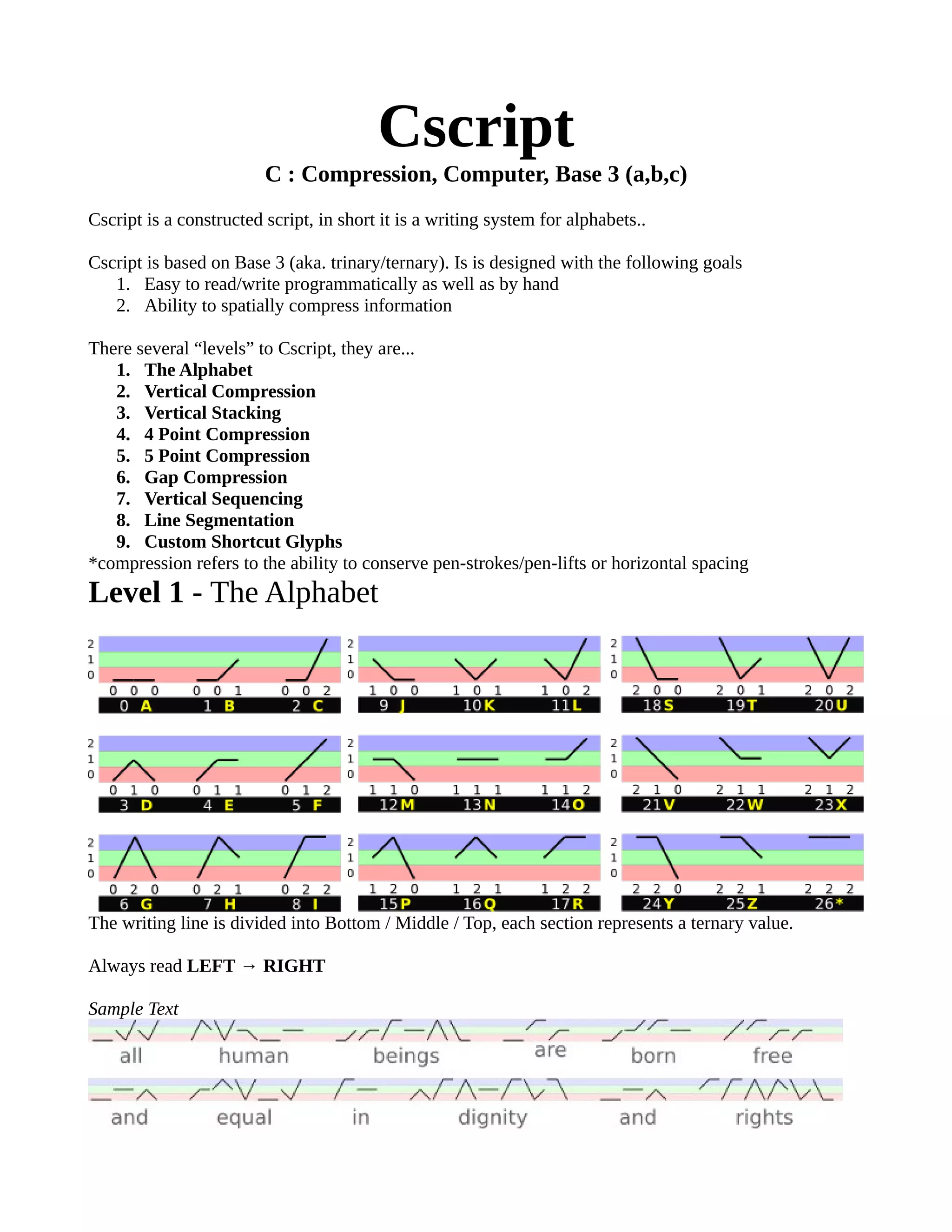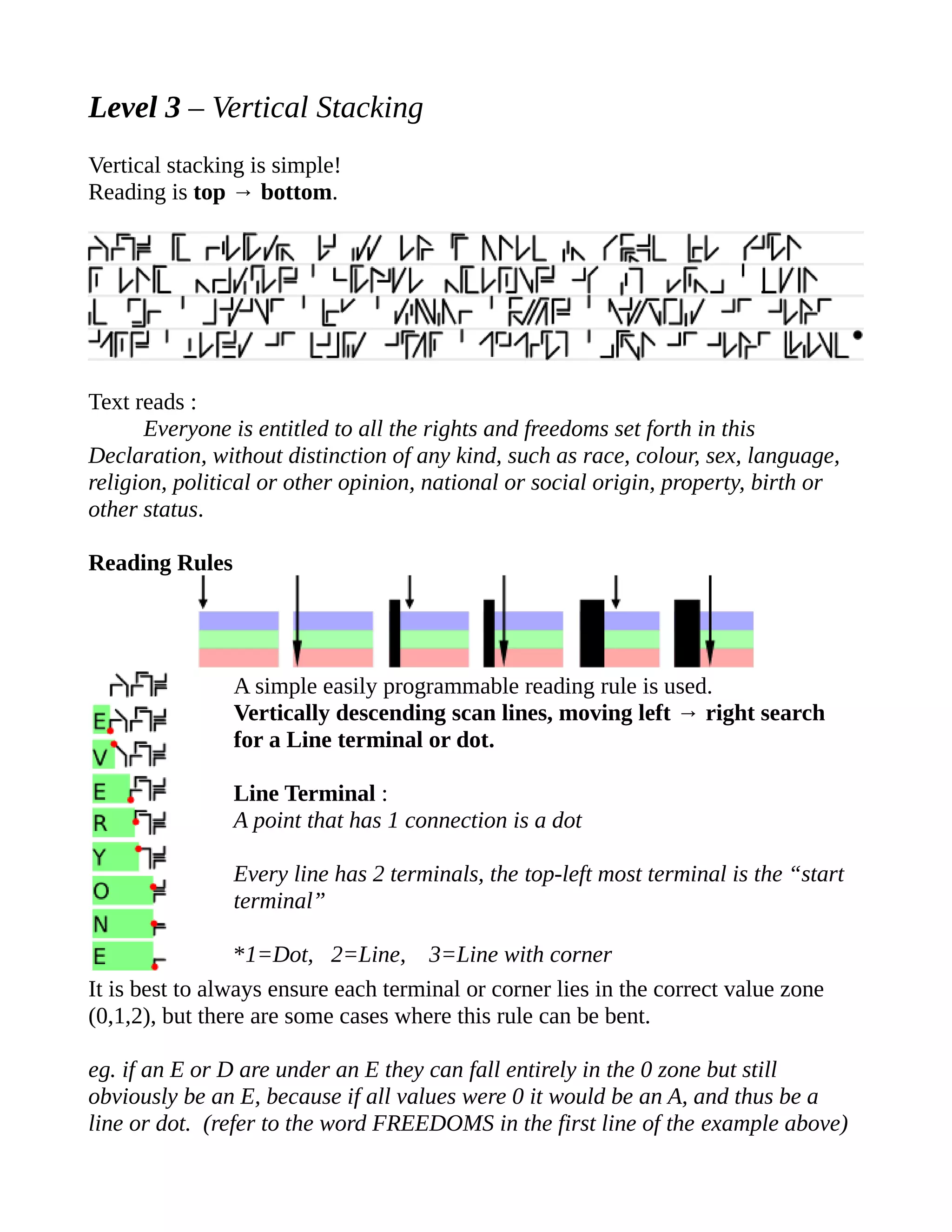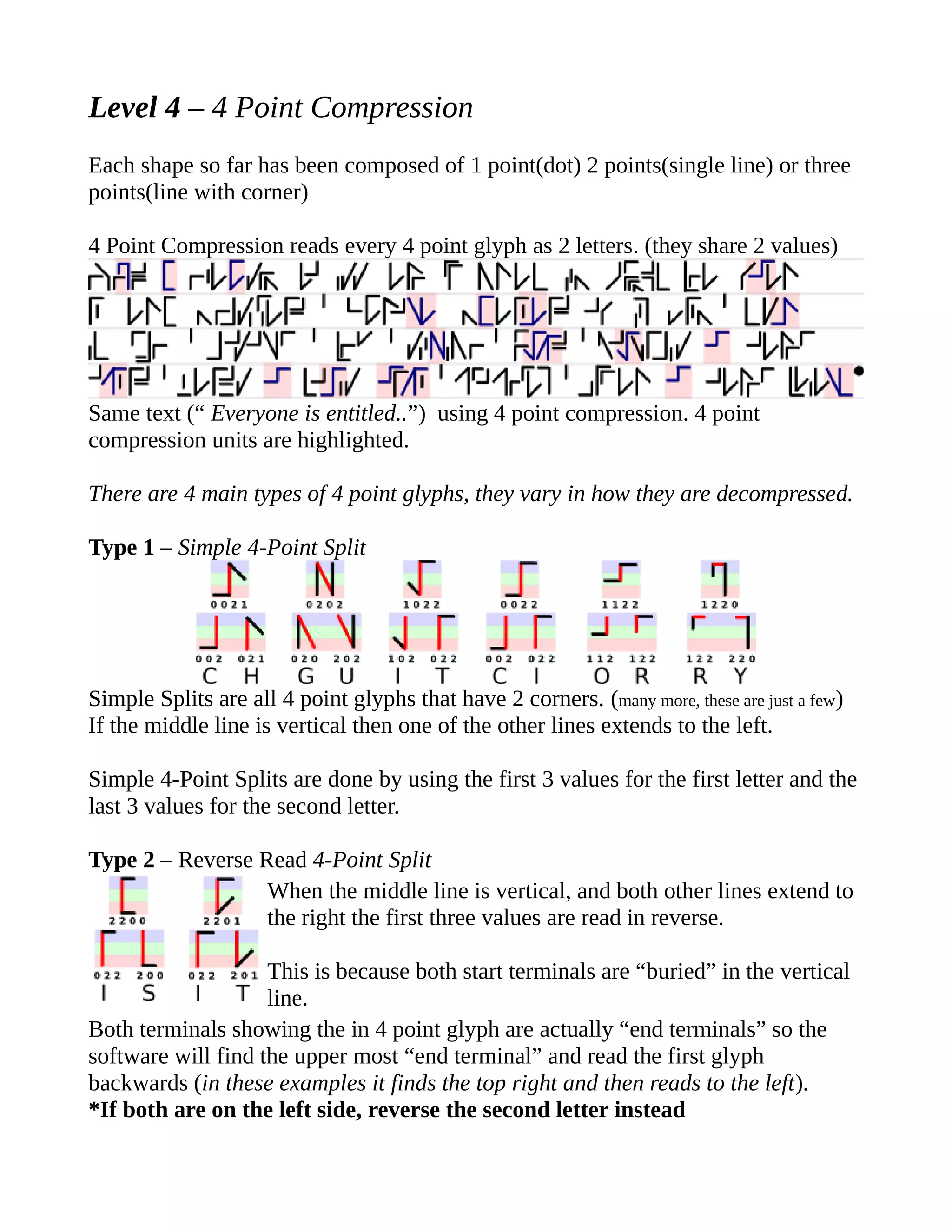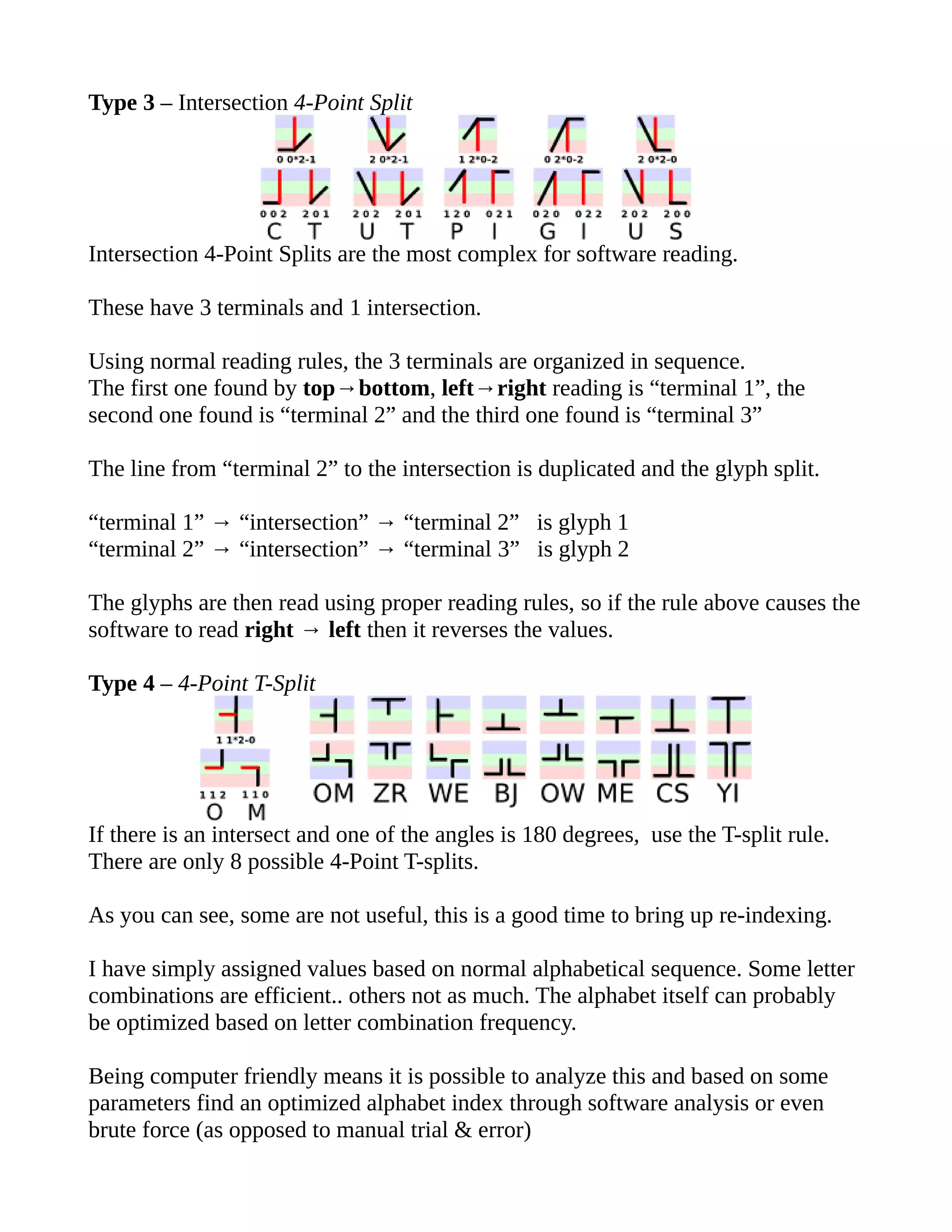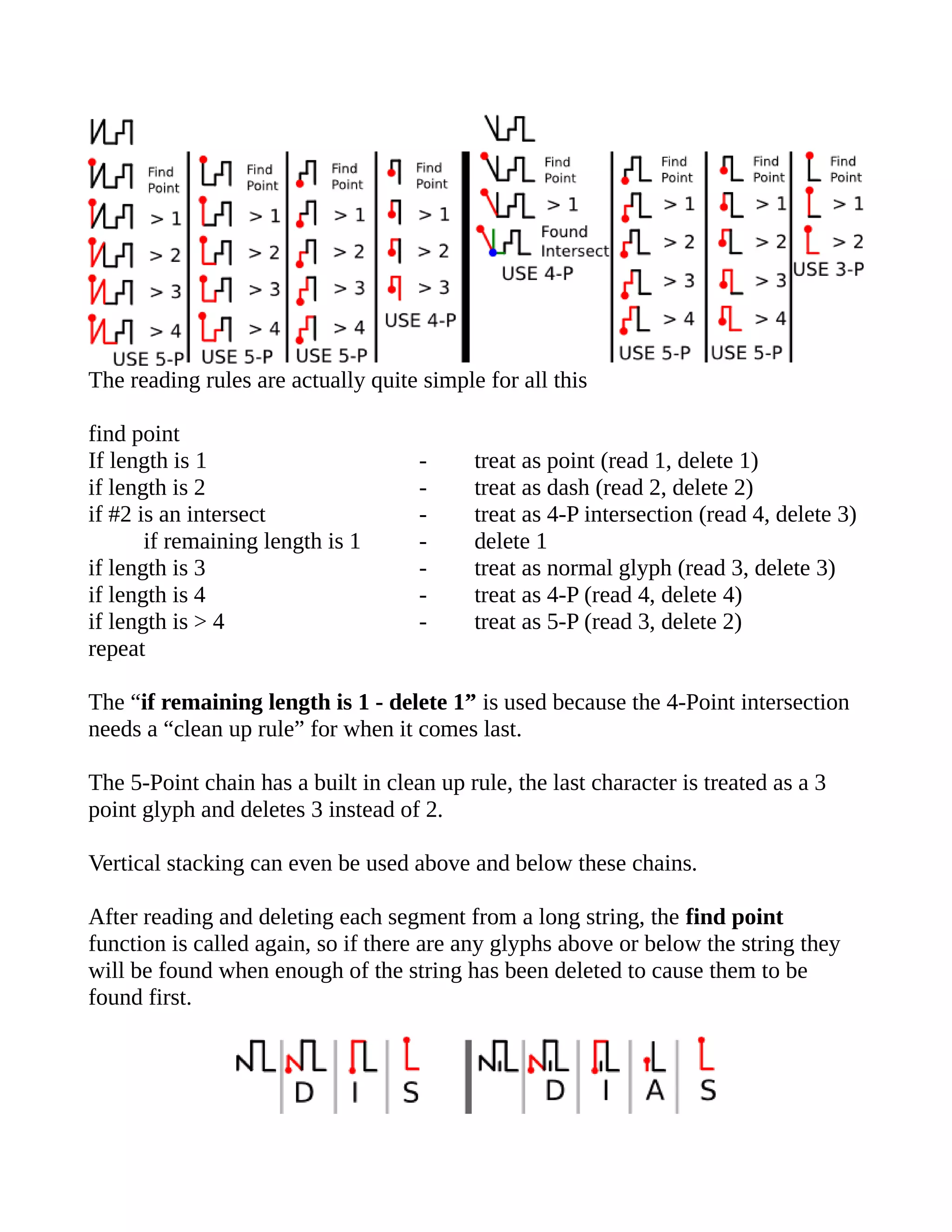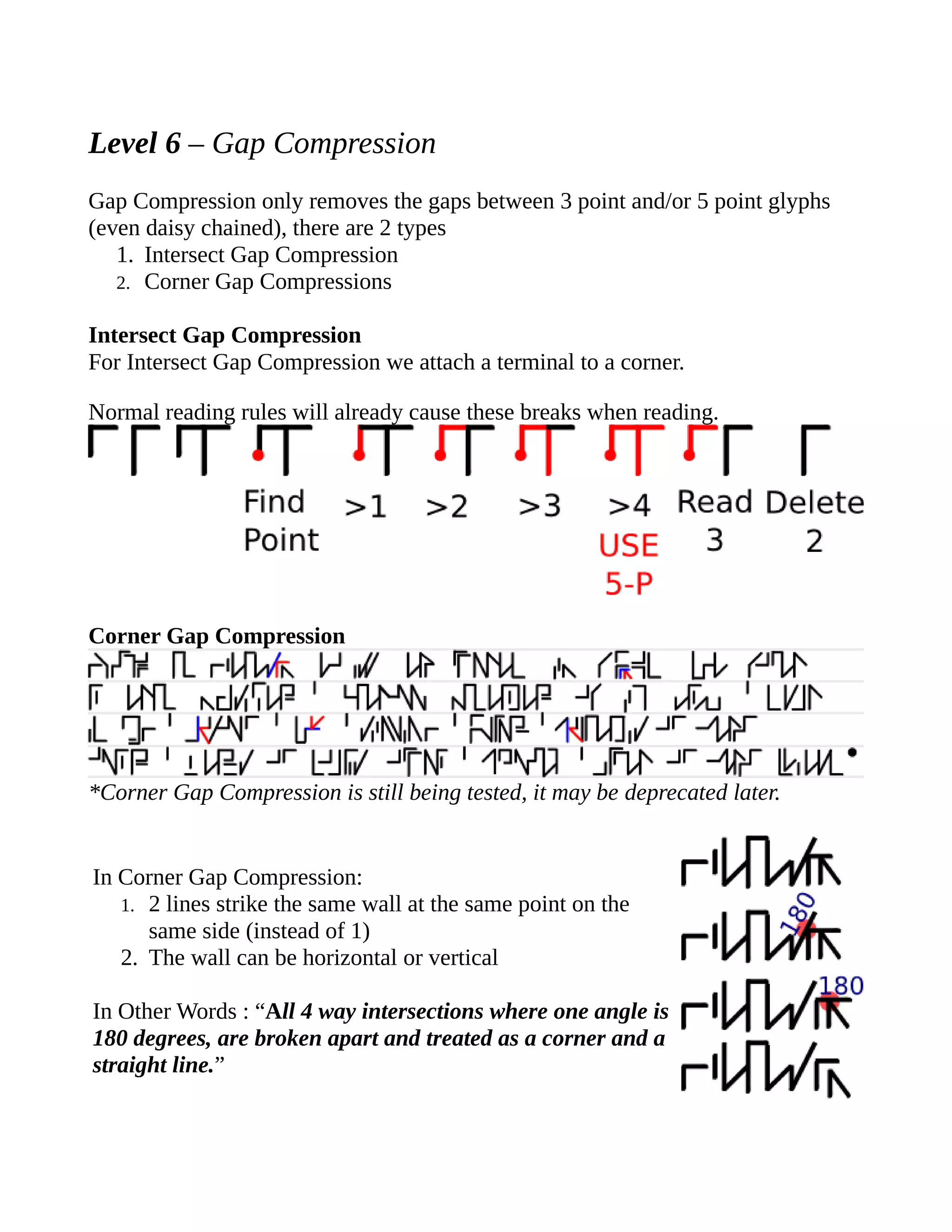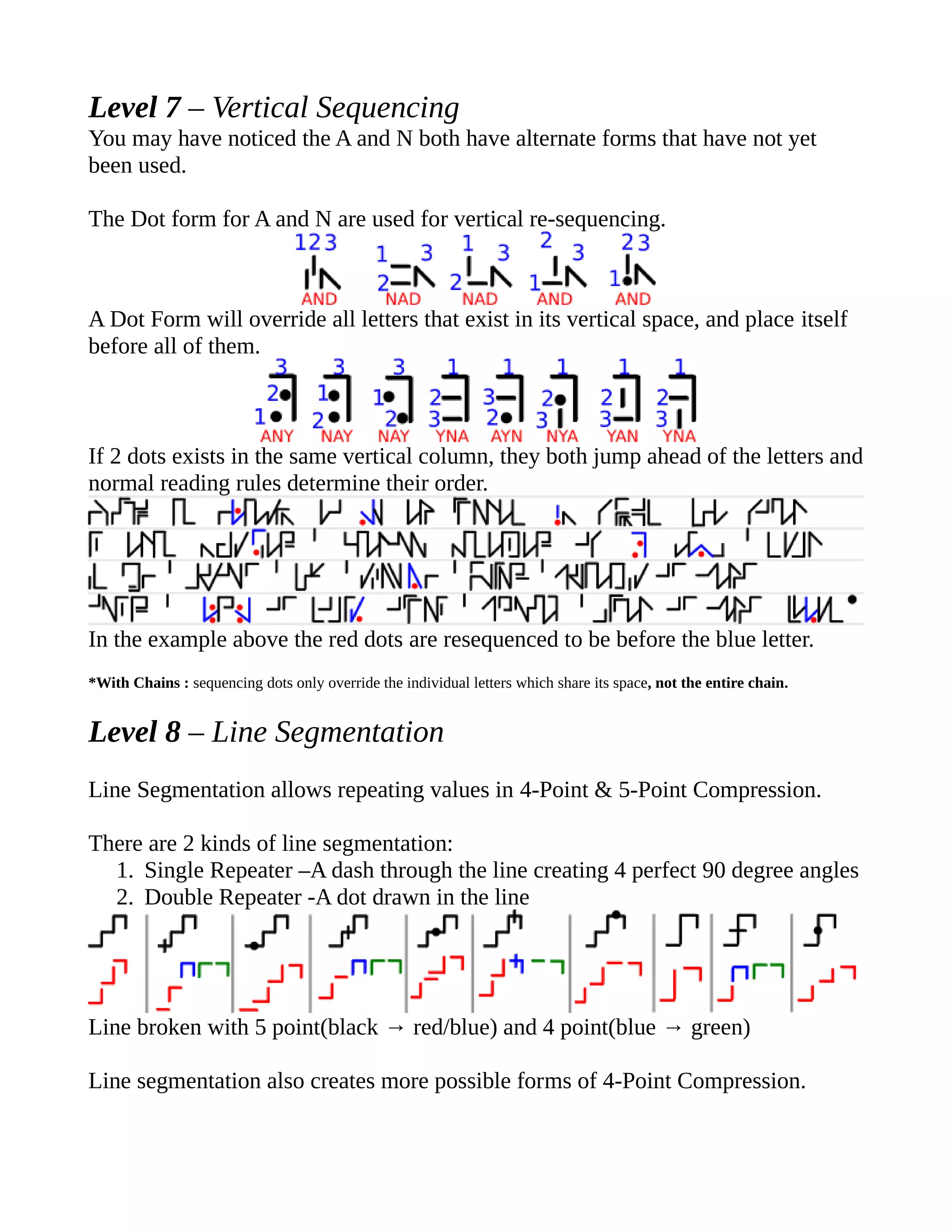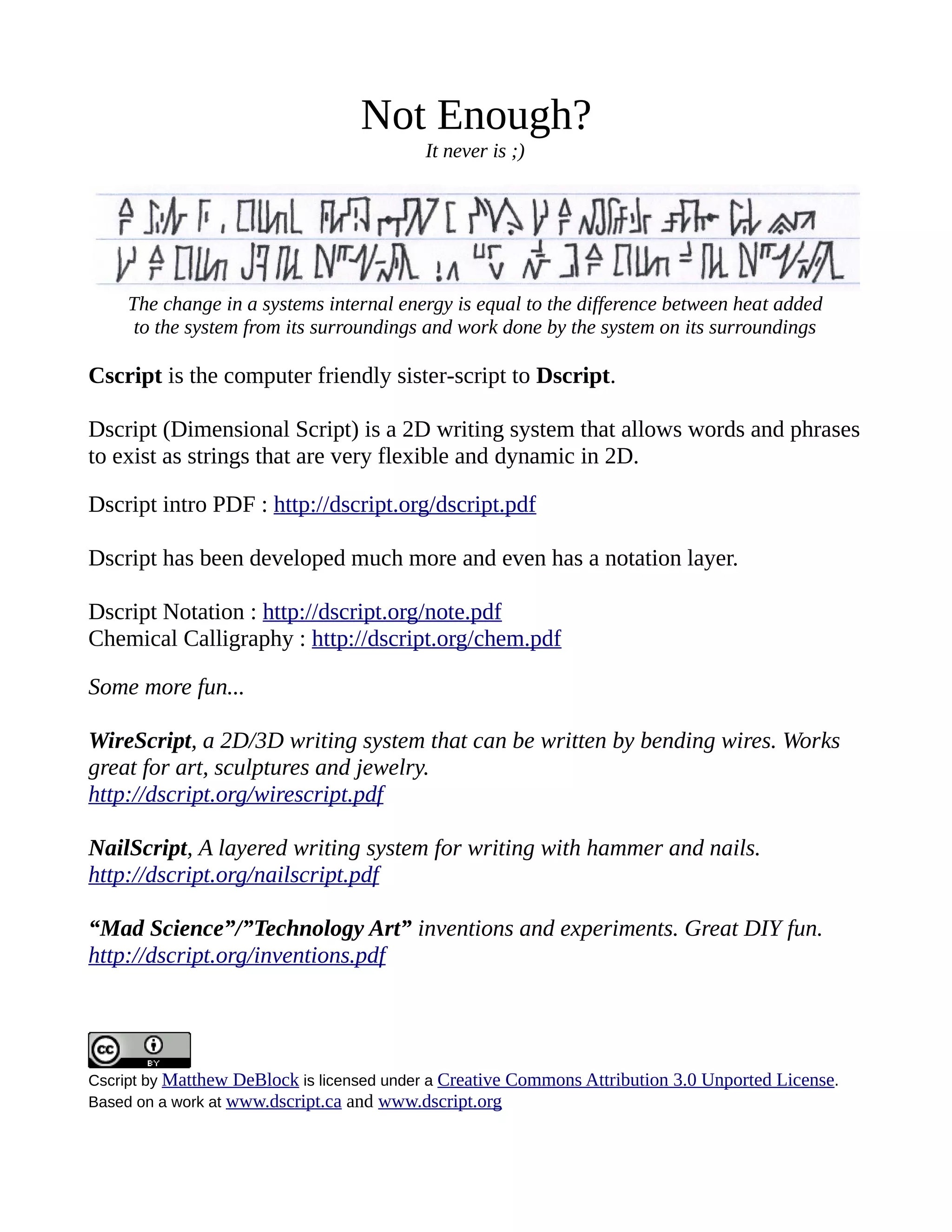This document summarizes the key levels and techniques of Cscript, a constructed writing system based on ternary (base 3) values. Cscript aims to compress information spatially through techniques like vertical compression of letter components, vertical stacking of letters, multi-point glyphs representing multiple letters, gap compression, and custom shorthand glyphs. It describes 9 levels of the system in detail, from the basic ternary alphabet to more advanced techniques like 5-point compression representing 2 letters, line segmentation allowing repeated values, and use of resequenced or invalid symbol shortcuts.
